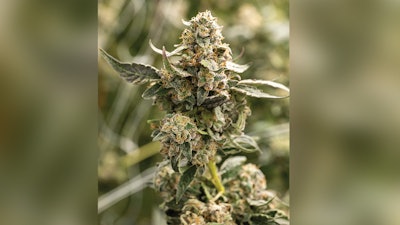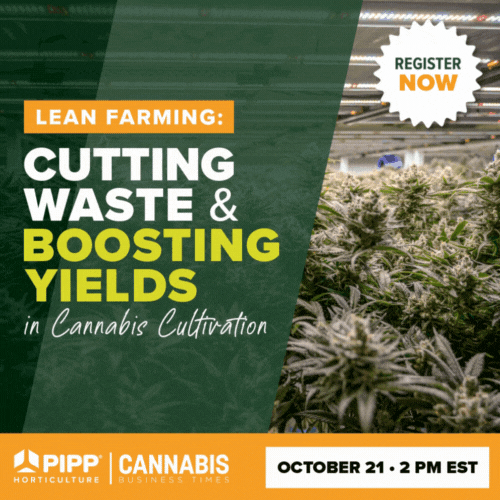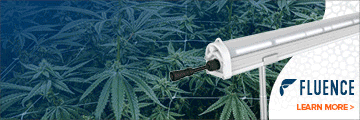
When James Laski and his partners at TGB Consulting, LLC designed their new cultivation facility in California’s San Fernando Valley, it was purpose-built for HPS (high-pressure sodium) lighting. For the partners, who operate several cannabis companies, that decision rested largely on their familiarity with HPS.
They also wanted to ensure this dedicated facility, set to do business as Green Rose Co., could predictably deliver the exceptional wholesale, white-label production they expected. But while still in Phase One of the buildout—with lighting already installed—Fluence LEDs came into the picture.
Exploring LED Lighting Systems
Fluence Horticulture Service Specialist Taylor Kirk recalls his early contact with the facility: “My first visit was really reassuring that, first of all, I was going to be working with growers that already knew how to manage a proper environment, from the way I see it for cannabis.” The Green Rose team also visited Clade9, which recently did a Fluence LED retrofit, and was open to the need to tweak a few set points.
For Chief Operating Officer Laski and his partners, the biggest initial consideration in switching to LEDs was the upfront cost. “But then we looked down the road at being able to have the cost savings as far as not having to change out bulbs every few cycles and so forth,” he explains. “Then also the heat in the room being a lot less, so the HVAC wouldn't be such a big factor.”
Trialing Fluence LEDs in Veg
Green Rose’s first LED trial, in the veg room, delivered much greater growth. With Phase One started and Phase Two still being built out, Laski says, “We saw the benefits of that, so we went ahead and pulled the trigger and decided, let's do that now before we fire up that side.”
The HPS came out, and Fluence VYPRs went up in a one-to-one replacement (based on total light output). The team saw an immediate, dramatic drop in HVAC needs.
“We have about 35 tons of AC in that room, and now 5 tons is usually always on, and then another 5 will kick on and kind of pepper it in, because in the veg room, obviously you're running higher temps anyway. That was kind of funny to see that and realize, well, now we got a ton of HVAC on our roof that we don't necessarily need. But it's nice to have backups,” Laski says, with a laugh.
“That room runs 18 hours a day anyway. It's the longest-running room out of the facility,” Laski adds. “So just the cost factor of not having 35 tons of AC running constantly for 365 days a year—it was a huge cost savings in that.”
Safety was another big LED selling point for Laski: “We've had issues with HPS in other facilities where a bulb bursts and it drops to the table and it causes a fire, and now your equipment in the room is destroyed. Just having that stability, knowing that we're not going to deal with those kinds of issues anymore, is a huge benefit. So, it worked out really good for the veg.”
Moving Into LEDs in Flower
After their success in veg, the Green Rose team decided to do a run in flower with Fluence RAPTRs, which put out about 40% more light with the same wattage in a 1:1 HPS retrofit. When they switched out their HPS for LEDs in one of their flower rooms, Laski says the AC was “barely kicking with all the lights running.”
“We realized, just off that one room, what the savings would entail with not having to run all of our HVAC systems throughout the year. And again, the safety factor of not having bulbs in the room is a huge thing for me from an operational standpoint,” Laski says.
Flexibility with dimming was also a big plus, “if something’s going on in your flower stage throughout the process, and you need to dim your lights down so the intensity is not so high,” Laski says. “With HPS, you do that and you're losing your spectrum. With LED, you can dim them down and you keep that spectrum, so you’re not moving anything. The same thing when you have your crew in there to do the deleafs and so forth, any work, you can dim the lights down so it's not so intense, but it doesn't hurt your plants really to a degree.”
Dialing It in With LEDs
Now on their second run in the retrofitted flower room, Laski and the Green Rose team are working closely with Kirk to dial the room in to achieve optimal results. The focus is on quality and making the tweaks required to ensure the same outcome they had with HPS. As they do, they’re also getting much heavier weights—up more than 20%, on top of what Kirk says were already heavy yields.
Uniformity of light in the space is a major change. “We're pretty amazed at how much light intensity there is and also how fluid it is across the entire room,” Laski says. Working with Kirk, the team went with Fluence’s wireless system, which enabled them to program different zones in the room.
“With HPS, say all your lights in the room are at 100%. No matter what, your outside rows are always going to have that fall off, because there's not a row next to it” with another light area overlapping. With the RPTRs, we were able to do the first row, the fifth row, and then the front and the back as a zone, and then the middle as a separate zone,” Laski explains.
“So as the room was kicking off, we could have the outside zone be a little bit higher than the inside zone, so our PAR would be fluid from one wall all the way across to the other wall. So, you’re not losing anything,” he adds. “That’s probably a huge portion of why that room comes down with a lot of weight. Those first and last rows are pretty much uniform with the middle rows, which are usually your best producers.”
Focusing on Quality
Kirk stresses that, even though a retrofit is as easy as replacing lights one for one, every case is different. Each facility and each set of genetics can respond differently. “We've taken this one with a very open mind, which I always do really,” he says. “I really lean on the grower for what they're looking for and try to help them achieve that as quickly as possible.”
Kirk says it all comes down to how you get to the same place. Higher yields that come with higher light intensity and uniformity are great, but only if you can sell your products to the same buyers at the same price point. “So, we’re really big on quality over quantity, but recognizing that with the retrofit—the wattage-to-wattage retrofit— you can definitely see major increases in quantity,” he adds.
The focus at Green Rose is now on quality and the grow environment. “Now we're getting to this point of environmental [crop] steering, where we're really focusing on how can we use the environment to manipulate growth and increase yield, but then also focus on the quality components like color and cannabinoids and terpene production as well,” Kirk says.
“Where we're at right now is really trying to continue to dial in the quality components, ensure that we can get the color that they know they can get out of the genetics they’re running, and do that with the yield. That'll be a win, win,” Kirk says.
Working With Fluence
Laski, who describes himself as a cost guy, shares that the Green Rose clone room is now outfitted with dimmable Fluence RAZRs. With three sections of four-tier shelving, he has three ballasts interconnected and running into a single 120v receptacle on a 20-amp breaker. And they’ve seen roots in as little as four days.
“Basically, if you didn't go ahead and build out your facility already and spend all the money on wiring and conduit, you can mitigate a ton of that,” Laski says. “So, it's cost on installation, cost on material. That plays into it massively. Building a facility from start, you'd be able to gain all that as well.”
Laski adds that he can reach Kirk pretty much anytime he needs him and draw on his LED expertise. Green Rose can share what they’re seeing now compared to what they normally see with HPS, then adjust easily. Kirk also works very closely with TGB’s head grower, Tony, and cultivation managers Rob and Shannon. Together they have worked as a closely-knit team through the trial.
“That's kind of the nice thing,” he says. He can’t imagine that with another company you would “have that kind of marriage, in the sense of really keeping on top of how everything's going, the site visits and so forth,” he says.
Laski adds that it’s also nice to call in for technical support and get someone quickly—who knows more about the equipment than you do: “Some other companies, it's like you try and get a hold of somebody, and then with that person you feel like you already know more than what they're telling you about their own equipment. You don't have that with Fluence.”
More from our latest newsletter:
Sponsored: 6 Key Crop Lighting Design Considerations You Don't Want to Overlook
Sponsored: Maximum Light Intensity and Efficacy: RAPTR Series


